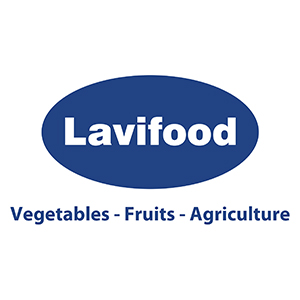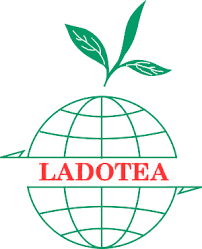- Giới thiệu
- Nhóm Công tác
- Tin tức
- Thông tin về FTA
- Tài Liệu
- Sự kiện
- Liên hệ
The Government approved of the One Million Hectares High-Quality Rice Project
The Prime Minister approved the Sustainable Development Project of one million hectares specializing in high-quality, low-emission rice cultivation associated with green growth in the Mekong Delta until 2030

One million hectares of high-quality, low-emission rice
Decision No. 1490, dated November 27, 2023, and signed by Deputy Prime Minister Tran Luu Quang, signifies a significant stride towards realizing this ambitious initiative. By 2030, the targeted cultivated area for high-quality, low-emission rice in the Mekong Delta is set to encompass one million hectares.
The overarching objective of this Project is to establish specialized, high-quality, low-emission rice cultivation areas amounting to one million hectares. This initiative aligns with restructuring the production system along the value chain, implementing sustainable farming processes to enhance production, increase value, and facilitate the sustainable development of the rice industry. Furthermore, it aims to improve production and business efficiency, elevate the income and quality of life for rice growers, safeguard the environment, adapt to climate change, and contribute to reducing greenhouse gas emissions, honoring Vietnam's international commitments.
Regarding sustainable farming: The Project outlines specific targets, including reducing the amount of rice seeds sown to less than 70 kg/hectare, minimizing chemical fertilizers and pesticides of chemical origin by 30%, and decreasing irrigation water usage by 20% compared to traditional methods. Implementing at least one sustainable farming process, such as One Must Five Reductions, Sustainable Rice Platform - SRP, alternate wetting and drying (AWD), and other standardized agricultural practices, is mandated across 100% of the designated area.
Regarding production organization: 100% of production areas specializing in high-quality and low-emission rice cultivation have production and consumption links between businesses and cooperatives or farmer organizations in production and consumption; the synchronous mechanization rate reaches over 70% of the area; over 1,000,000 households apply sustainable farming processes.
Regarding environmental protection and green growth: The post-harvest loss rate is less than 8%; 100% of straw is collected from the fields and processed for reuse; reduces greenhouse gas emissions by over 10% compared to traditional rice farming.
Regarding rice growers’ income and added value: Added value in the rice chain shall increase by 40%, of which the profit margin for rice growers reaches over 50%.
Regarding branding and export: The amount of rice exported with high-quality, low-emission brands accounts for over 20% of the total rice export of the entire specialized farming region.
12 Mekong Delta provinces cultivate one million hectares of rice areas
The collaborative effort to cultivate one million hectares of high-quality rice spans the expanse of 12 provinces in the Mekong Delta, namely An Giang, Kien Giang, Dong Thap, Long An, Soc Trang, Can Tho, Bac Lieu, Tra Vinh, Hau Giang, Ca Mau, Tien Giang, and Vinh Long. With the recent official approval, the project has two strategic phases, each designed to ensure the project's success.
Phase 1 (2024 - 2025): This initial phase consolidates existing areas covered by the Vietnam Sustainable Agricultural Transformation Project (VnSAT), encompassing 180,000 hectares. Key activities include intensive training, planning, and establishing a Measuring-Reporting-Verification (MRV) system. The phase will also involve quantifying and piloting carbon credits for qualified rice areas, demonstrating a commitment to sustainable agriculture and environmental responsibility. Cooperative strengthening, the continuation of ongoing projects, and the strategic preparation for the subsequent period of 2026 - 2030 are included in Phase 1.
Phase 2 (2026 - 2030): A primary objective is the reduction of new emissions beyond the VnSAT Project area, accompanied by an expansion of an additional 820,000 hectares. This phase emphasizes key activities such as substantial investments in completing infrastructure for new areas, a comprehensive reorganization of production systems, the establishment of resilient value chains, and the fine-tuning of the MRV system. Phase 2 underscores the commitment to maintaining sustainable production practices within the project areas established from 2024 - 2025.
The Ministry of Agriculture and Rural Development chairs the Project
In the newly approved Decision, the Government assigned the MARD to preside and coordinate with relevant ministries, branches, and People’s Committees of provinces and centrally run cities in the Mekong Delta region. Under its leadership, the Ministry guides the organization and execution of the Project, working in tandem with localities and businesses to formulate detailed implementation plans. An annual summary report is to be presented to the Prime Minister, and a preliminary review of the Project's status in 2025, followed by a comprehensive overview in 2030, is organized by the Ministry.
In coordination with relevant ministries and branches, the MARD spearheads the formulation and execution of regulations for the measurement, reporting, and appraisal of greenhouse gas emission reduction. Aligning with international standards and the specific conditions of Vietnam, the Ministry develops and proposes pioneering policies and results-based payment mechanisms for carbon credits in specialized farming areas.
The MARD is responsible for constructing a robust monitoring and evaluation (M&E) system anchored in the Project's output indicators and specific objectives. It leads collaborative efforts with relevant ministries and branches to secure funding from international organizations, ensuring the sustained progress and success of the Project.
The Ministry of Planning and Investment plays a key role in reporting to competent agencies and determining state budget investment capital allocated for development investments across industries and fields in the medium term. Additionally, it formulates the annual public investment plan, adhering to the stipulations outlined in the Law on Public Investment.
Focusing on fiscal responsibility, the Ministry of Finance oversees the allocation of non-business funding from the central budget. Drawing on proposals from the Ministry of Agriculture and Rural Development and other pertinent ministries, the Ministry of Finance submits these proposals to competent authorities, ensuring alignment with the provisions of the State Budget Law and related legislation.
Tin liên quan
PSAV Attends the 30th Anniversary Celebration of Cargill Vietnam2025/10/23
Plant health management helps increase coffee yield up to 15%2025/10/16
An Giang to host 2025 OCOP forum for sustainable development2025/09/25
Viet Nam and France foster cooperation on blue economy and sustainable environment2025/09/29
Agriculture and Environment exhibition ready for National celebration2025/08/27



 Điều lệ hoạt động
Điều lệ hoạt động



















































